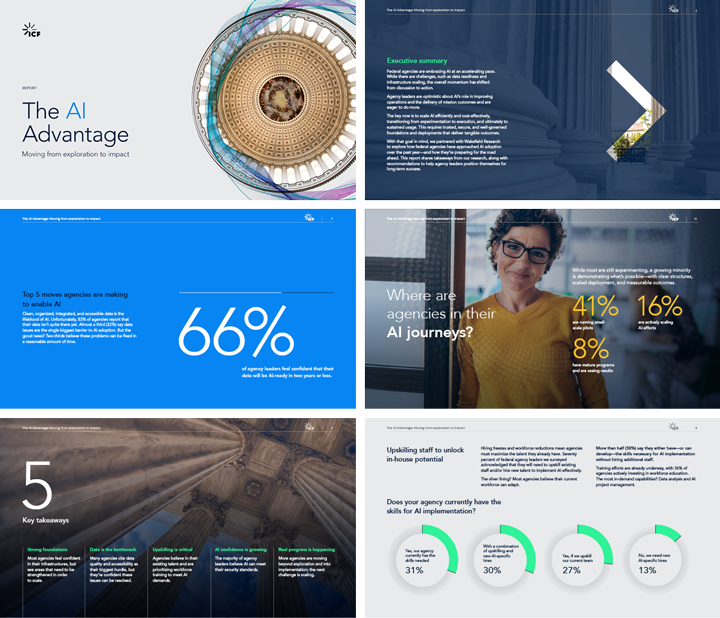
How CDC uses AI to expedite vital COVID-19 legislation
We developed a custom-trained deep neural network (DNN) to rapidly process legal documentation for the Centers for Disease Control and Prevention (CDC), accelerating the pace of innovation for further datasets and analyses.
Using human-centered design, we worked with the Centers for Disease Control and Prevention’s COVID-19 emergency response team to deliver technology solutions that replace labor-intensive manual processes. Leveraging artificial intelligence (AI), we developed an algorithm that processes, tracks, and catalogs legal documentation—significantly reducing time, labor, and cost.
Challenge

The COVID-19 pandemic prompted legal mitigations and policies—from nonessential business closures to restrictions on movement—across all 50 U.S. states. For the CDC’s epidemiologists and data scientists, tracking and categorizing such mitigations is critical to advancing the agency’s mission to increase the nation’s health security. Due to the unexpected rapid response required by the COVID-19 pandemic, the CDC had no previously defined repository in place for cataloging legal documentation with these specific parameters. This necessitated a labor-intensive process for tracking and categorizing policies, requiring staff to manually scan and track documents on a daily basis—which ultimately resulted in a substantial backlog of legal documentation.
- AI
- Cloud
- Human-centered design
- Open source
Solution
Our principal data scientist, working with CDC’s emerging technology staff, built a custom-trained deep neural network (DNN) to monitor, scan, and assign or tag 42 categories to tens of thousands of documents in accordance with the CDC’s distinct guidelines. Using rapid prototyping and human-centered design, we leveraged natural language processing and AI to create an algorithm using open-source technology—ensuring that its future iterations are adaptable and not tied to proprietary or costly platforms or software.
Results
By detecting patterns in the wording and syntax of the legal documents, the algorithm completes hours of tedious work, removing that burden from skilled analysts. As a result, the CDC was able to review in two weeks what would have taken roughly 312 workdays for one person to complete.
Using the tags as a guide, legal epidemiologists can quickly identify categories of laws that would be fruitful to explore for new, special topic datasets. This has allowed CDC’s databases to grow exponentially, which in turn allows for new analyses—making it possible for the CDC to answer important public health questions quickly.
“This project has simultaneously saved our team countless hours of work without compromising accuracy. Now we can turn our attention to analyzing and answering critical questions about the impact of COVID-19-era laws on public health outcomes.”
Related client stories
